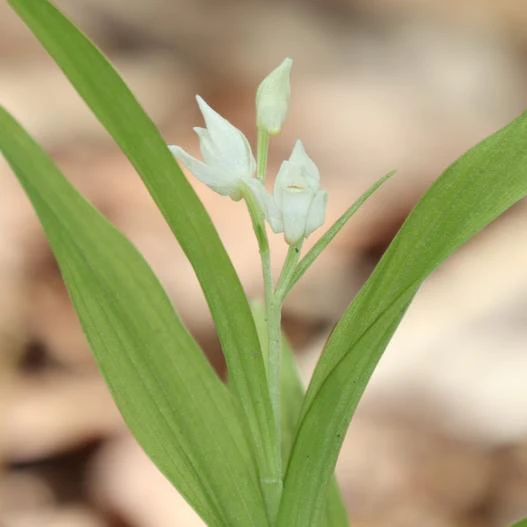Swordleaf Helleborine
(Cephalanthera longibracteata)
Swordleaf Helleborine (Cephalanthera longibracteata)
/
/

Alpsdake
CC BY-SA 4.0
Image By:
Alpsdake
Recorded By:
Copyright:
CC BY-SA 4.0
Copyright Notice:
Photo by: Alpsdake | License Type: CC BY-SA 4.0 | License URL: https://creativecommons.org/licenses/by-sa/4.0 | Uploader: Alpsdake | Publisher: Wikipedia Commons


























Estimated Native Range
Climate Requirements
| • Precipitation | 50" - 60" |
| • High Temp. | 76°F - 84°F |
| • Low Temp. | 11°F - 27°F |
Summary
Cephalanthera longibracteata, commonly known as Swordleaf Helleborine or Long Bracted Helleborine, is a deciduous herbaceous plant native to a variety of woodland habitats, including deciduous and mixed forests, often on calcareous soils throughout Asia. It typically grows to a height of 1.5-2 feet (0.46-0.6 meters) and is characterized by its sword-shaped leaves and elongated inflorescence bearing white, showy flowers that bloom in late spring to early summer. The flowers are notable for their size and the long bracts that extend beyond the blooms.
Swordleaf Helleborine is appreciated for its elegant flowers and is used in shaded garden settings, such as woodland gardens and naturalized areas. It is relatively low-maintenance, requiring minimal care once established in the right conditions. It prefers part shade, thriving under the dappled light of larger trees, and does well in medium or fast-draining clay or loam soils with a neutral to alkaline pH. While it needs consistent moisture, it is important to avoid waterlogged conditions. This species is not commonly found in the nursery trade but can be a unique addition to a shade garden for those who can source it. It is, however, susceptible to root rot if drainage is inadequate and may be difficult to establish due to its specific soil and light requirements.CC BY-SA 4.0
Swordleaf Helleborine is appreciated for its elegant flowers and is used in shaded garden settings, such as woodland gardens and naturalized areas. It is relatively low-maintenance, requiring minimal care once established in the right conditions. It prefers part shade, thriving under the dappled light of larger trees, and does well in medium or fast-draining clay or loam soils with a neutral to alkaline pH. While it needs consistent moisture, it is important to avoid waterlogged conditions. This species is not commonly found in the nursery trade but can be a unique addition to a shade garden for those who can source it. It is, however, susceptible to root rot if drainage is inadequate and may be difficult to establish due to its specific soil and light requirements.CC BY-SA 4.0
Plant Description
- Plant Type:
- Height: 1.5-2 feet
- Width: 0.5-1 feet
- Growth Rate: Moderate
- Flower Color: White
- Flowering Season: Spring
- Leaf Retention: Deciduous
Growth Requirements
- Sun: Part Shade
- Water: Medium
- Drainage: Fast, Medium
Common Uses
Bee Garden, Border Plant, Low Maintenance
Natural Habitat
Deciduous and mixed forests, often on calcareous soils throughout Asia
Other Names
Common Names: Long Bracted Helleborine
Scientific Names: Cephalanthera longibracteata , Cephalanthera ensifolia var. longibracteata , Epipactis longibracteata , Limodorum longibracteatum , Serapias longibracteata
GBIF Accepted Name: Cephalanthera longibracteata